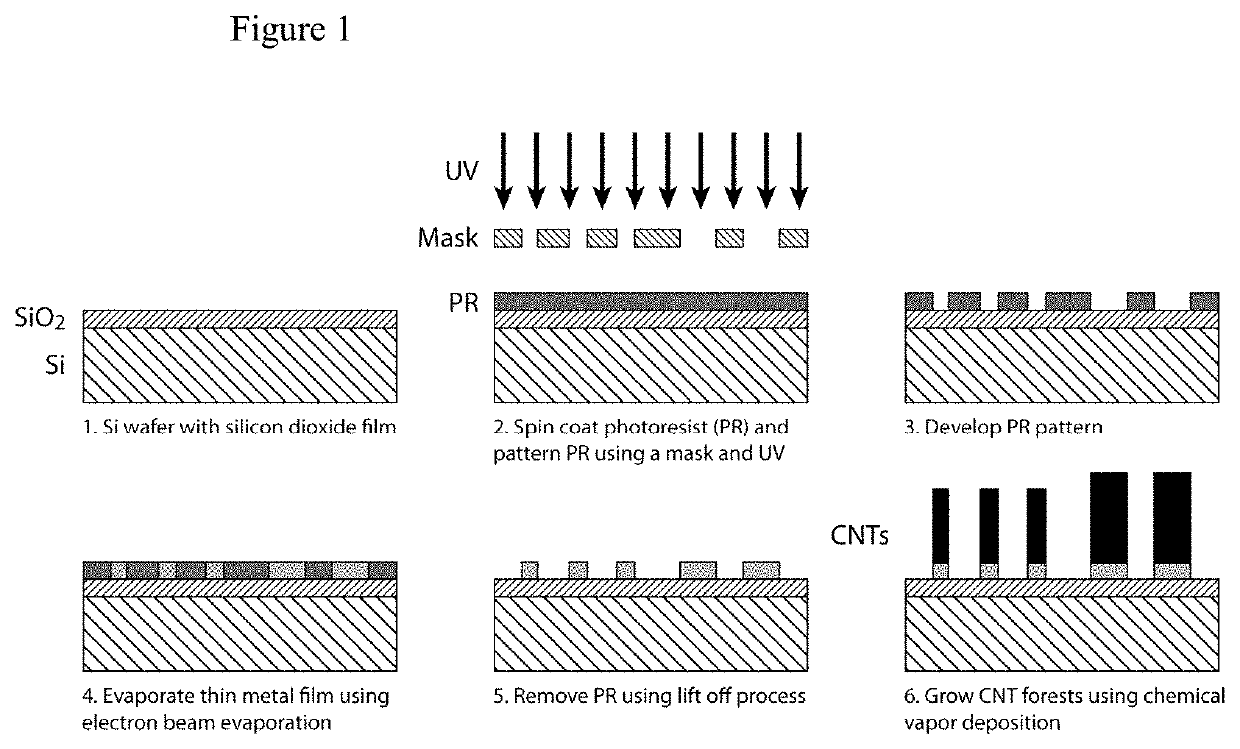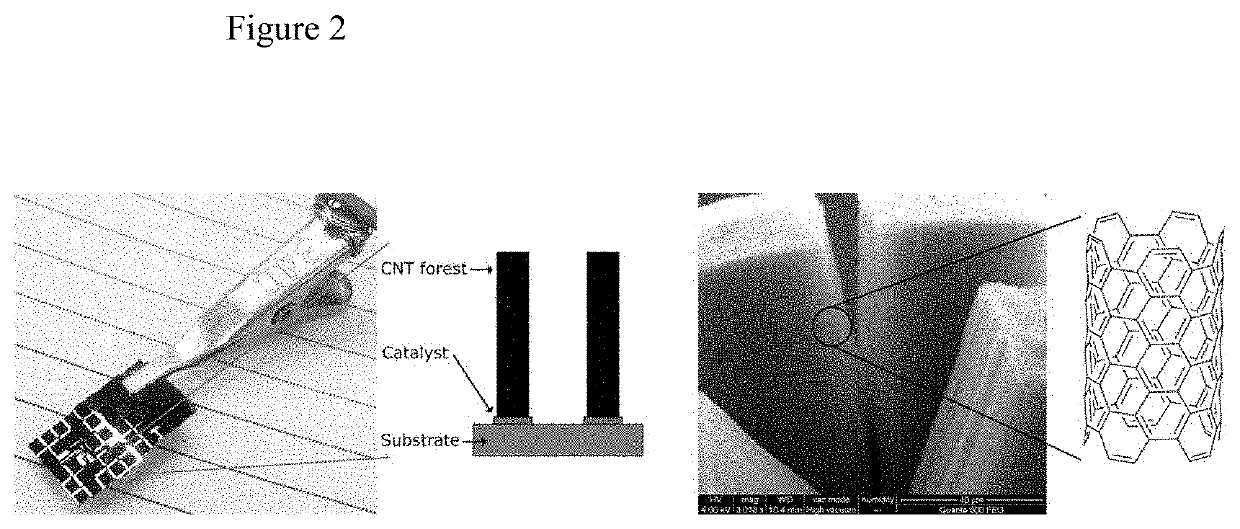Covalent functionalization of carbon nanotubes grown on a surface
a carbon nanotube and functionalization technology, applied in the field of covalent functionalization of carbon nanotubes grown on a surface, can solve the problems of large process errors, inability to functionalize cnts when on the chip, and problems such as reproducibility of devices, so as to reduce/eliminate facilitate the operation of nanostructures, and reduce the risk of short circui
- Summary
- Abstract
- Description
- Claims
- Application Information
AI Technical Summary
Benefits of technology
Problems solved by technology
Method used
Image
Examples
example 1
Fabrication of CNT Structures
[0117]The fabrication process for the CNT forest on chip is shown in FIG. 1.
[0118]A silicon wafer with a 0.5 μm silicon oxide was used as the substrate. Using lithography, a pattern was created on a photo resist (PR) film on the substrate. Electron beam evaporation was employed to deposit thin films of metals (Ti 1 nm / Mo 100 nm / Al2O3 5 nm / Fe 1 nm). Iron film is used as a catalyst to grow CNT forests. After e-beam evaporation, the photoresist is dissolved in an organic solvent (Photoresist remover) assisted by an ultrasonic bath, a process known as lift-off. The wafer is diced into chips and CNT forests are grown on the chips using thermal chemical vapor deposition (CVD) process. In this process, the catalyst (iron) is first annealed at 500° C. for 5 minutes in the presence of Hydrogen and Nitrogen. Later, ethylene, hydrogen and nitrogen gases are added at 700° C. and hence, CNT forests are grown by CVD. The process is carried out in a cold tube furnace s...
example 2
Functionalization Process
[0121]The strategy to functionalize CNT forests on chip is based on the well known 1,3-dipolar cycloaddition of azomethine yields to C60 and SWCNT in solution and is outlined in the scheme shown in FIG. 3. The azomethine ylide was formed upon heating to 120° C. in dichlorobenzene from the imine formed in situ between glycine and benzaldehyde, and reacted with CNT forests on chip. The procedure yielded the amine-modified CNT forest on chip, f-CNT 1, after cleaning. f-CNT 1 was further functionalized by an amide coupling with O-(2-azidoethyl)-O-[2-(diglycolyl-amino)ethyl]heptaethylene glycol to introduce azide functionalities on the CNT's. The amide coupling was carried out using PyBOP as coupling reagent under mild basic conditions (DIPEA in anhydrous CH2Cl2 at r.t.) to obtain azide functionalized CNT forests on chip, f-CNT 2. The functionalized CNT forests on chip were analyzed using SEM with EDS. To prove that f-CNT 2 were functionalized with azide groups, ...
PUM
| Property | Measurement | Unit |
|---|---|---|
| size | aaaaa | aaaaa |
| electrical conductivity | aaaaa | aaaaa |
| diameters | aaaaa | aaaaa |
Abstract
Description
Claims
Application Information
 Login to View More
Login to View More - R&D
- Intellectual Property
- Life Sciences
- Materials
- Tech Scout
- Unparalleled Data Quality
- Higher Quality Content
- 60% Fewer Hallucinations
Browse by: Latest US Patents, China's latest patents, Technical Efficacy Thesaurus, Application Domain, Technology Topic, Popular Technical Reports.
© 2025 PatSnap. All rights reserved.Legal|Privacy policy|Modern Slavery Act Transparency Statement|Sitemap|About US| Contact US: help@patsnap.com



